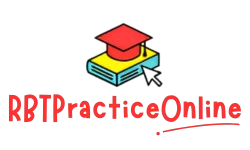This RBT Study Guide Comprises six Core Units. Each unit is designed to align with the RBT Task List (2nd Edition) published by the Behavior Analyst Certification Board (BACB).
📘 RBT Study Guide – Unit Syllabus
Below is the full syllabus for each of the 6 RBT units. Each task item is organized under its corresponding unit title to share what you’ll learn in each section.
1. Measurement
This unit focuses on preparing for and implementing data collection methods in behavior analysis.
Tasks Covered:
- A-1: Prepare for data collection.
- A-2: Implement continuous measurement procedures (e.g., frequency, duration).
- A-3: Implement discontinuous measurement procedures (e.g., partial & whole interval, momentary time sampling).
- A-4: Implement permanent-product recording procedures.
- A-5: Enter data and update graphs.
- A-6: Describe behavior and environment in observable and measurable terms.
2. Assessment
In this unit, you’ll learn to assist with assessments under supervision to identify client needs and preferences.
Tasks Covered:
- B-1: Conduct preference assessments.
- B-2: Assist with individualized assessment procedures (e.g., curriculum-based, developmental, social skills).
- B-3: Assist with functional assessment procedures.
3. Skill Acquisition
This is the largest unit and includes everything related to teaching and reinforcing new skills.
Tasks Covered:
- C-1: Identify essential components of a written skill acquisition plan.
- C-2: Prepare for the session as required by the skill acquisition plan.
- C-3: Use contingencies of reinforcement (e.g., conditioned/unconditioned, continuous/intermittent).
- C-4: Implement discrete-trial teaching procedures.
- C-5: Implement naturalistic teaching procedures (e.g., incidental teaching).
- C-6: Implement task analyzed chaining procedures.
- C-7: Implement discrimination training.
- C-8: Implement stimulus control transfer procedures.
- C-9: Implement prompt and prompt fading procedures.
- C-10: Implement generalization and maintenance procedures.
- C-11: Implement shaping procedures.
- C-12: Implement token economy procedures.
4. Behavior Reduction
This unit addresses how to reduce problem behaviors through behavior plans and interventions.
Tasks Covered:
- D-1: Identify essential components of a written behavior reduction plan.
- D-2: Describe common functions of behavior.
- D-3: Implement interventions based on modification of antecedents (e.g., motivating operations, discriminative stimuli).
- D-4: Implement differential reinforcement procedures (e.g., DRA, DRO).
- D-5: Implement extinction procedures.
- D-6: Implement crisis/emergency procedures according to protocol.
5. Documentation and Reporting
Learn the professional standards for documenting, communicating, and maintaining accurate records.
Tasks Covered:
- E-1: Effectively communicate with a supervisor in an ongoing manner.
- E-2: Actively seek clinical direction from supervisor in a timely manner.
- E-3: Report other variables that might affect the client in a timely manner.
- E-4: Generate objective session notes for service verification.
- E-5: Comply with applicable legal, regulatory, and workplace documentation requirements.
6. Professional Conduct and Scope of Practice
This final unit covers the ethical responsibilities and scope of work for RBTs.
Tasks Covered:
- F-1: Describe the BACB’s RBT supervision requirements and the role of RBTs.
- F-2: Respond appropriately to feedback and maintain or improve performance.
- F-3: Communicate with stakeholders as authorized.
- F-4: Maintain professional boundaries.
- F-5: Maintain client dignity.
FAQs
How to Use This RBT Study Guide
- Start with the first topic: We recommend going in order, starting with Measurement.
- Practice as you go: Each section includes short quizzes and application-based questions.
- Bookmark this page: Come back often and work at your own pace.
- Use our full-length RBT Practice Tests: Ready to simulate the real thing? Try a mock exam here.
Who This Guide Is For
- Students currently completing their 40-hour RBT training
- New RBT candidates preparing for the BACB RBT Exam
- Anyone needing a refresher on ABA practices and terminology
About This Site
We’re an independent platform dedicated to helping aspiring behavior technicians pass the RBT exam with confidence. Our resources are updated to reflect BACB’s latest guidelines and reviewed by experienced RBTs and BCBAs.
Have questions? Contact us here.
